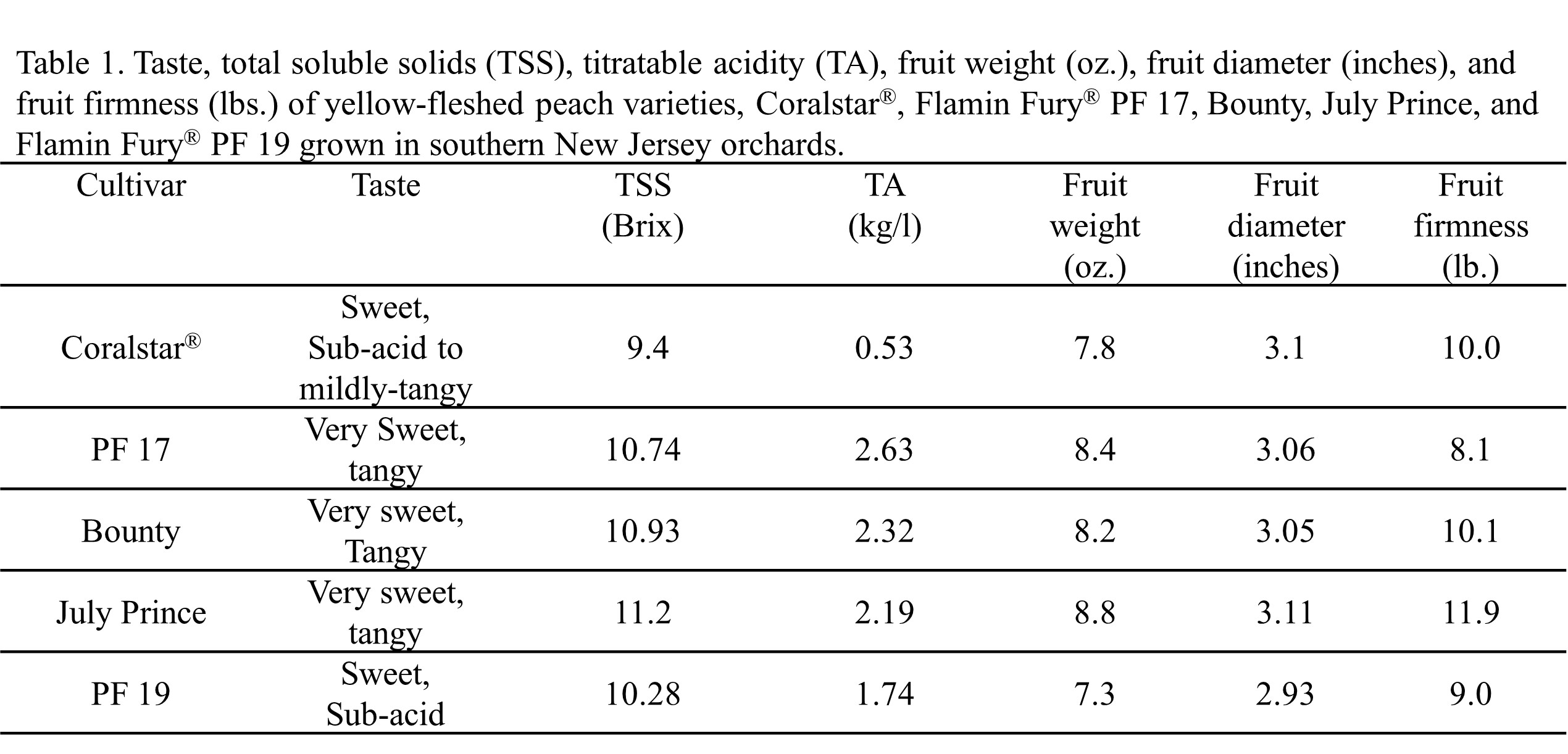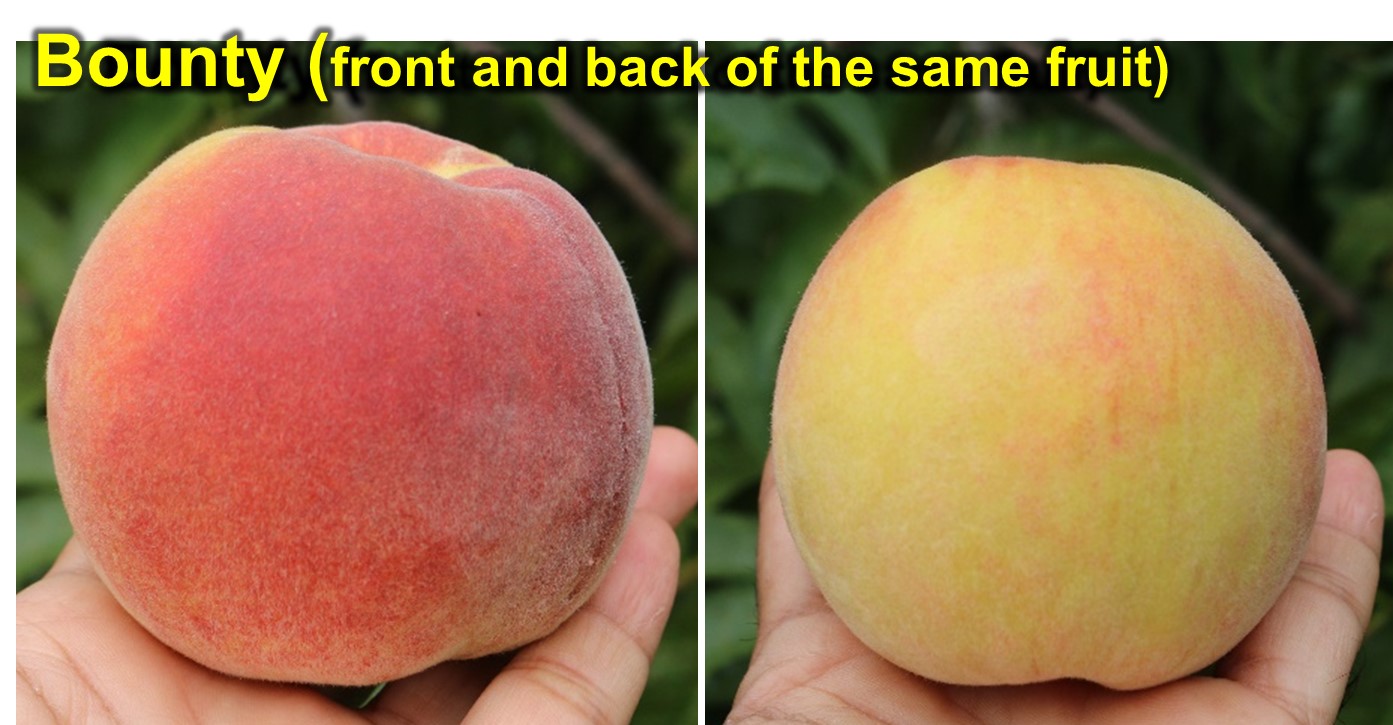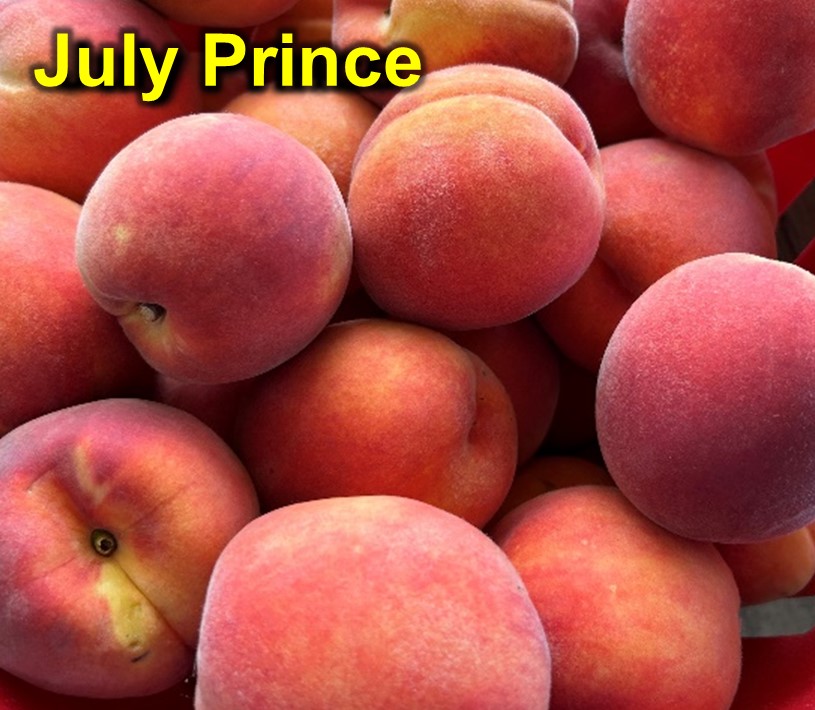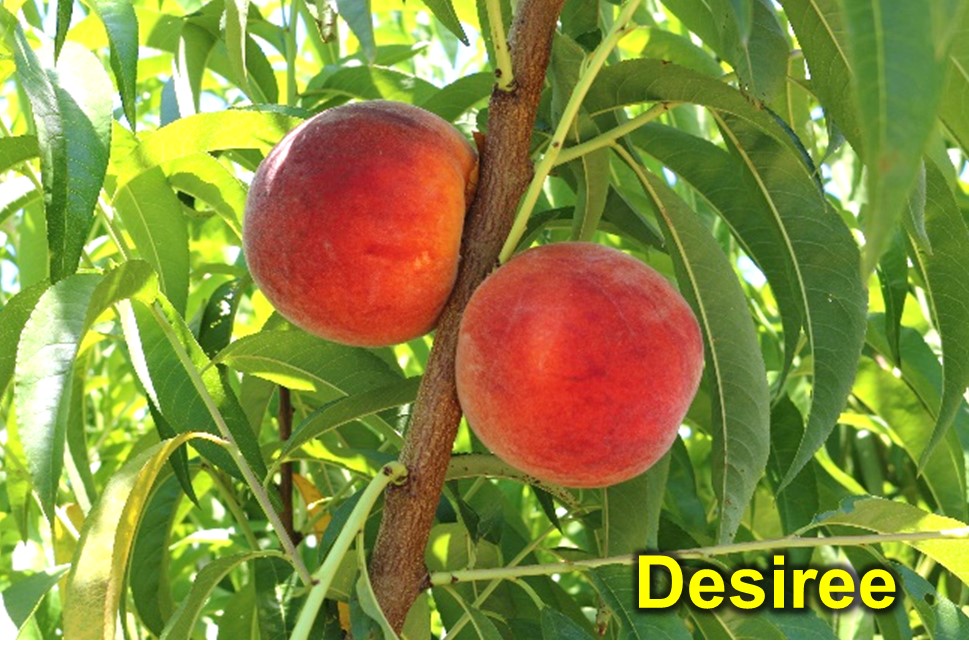 August is National Peach Month! No wonder many high-quality peach varieties are ripening during this month. Understanding these varieties’ tree and fruit characteristics in New Jersey conditions can help make planting, replanting, and harvest-related decisions. Table 1 describes the physical and chemical properties of some new and standard, early August peach varieties evaluated at RAREC (Rutgers Agricultural Research and Extension Center), Bridgeton. The ripening dates for central and northern New Jersey could be later by a few days.
August is National Peach Month! No wonder many high-quality peach varieties are ripening during this month. Understanding these varieties’ tree and fruit characteristics in New Jersey conditions can help make planting, replanting, and harvest-related decisions. Table 1 describes the physical and chemical properties of some new and standard, early August peach varieties evaluated at RAREC (Rutgers Agricultural Research and Extension Center), Bridgeton. The ripening dates for central and northern New Jersey could be later by a few days.
Coralstar® is a large, globose, 60-80% orange-scarlet red over orange-yellow ground color, yellow-fleshed, freestone peach ripening August 4-7, approximately 9 days after Redhaven. The flesh is firm with a very sweet and mildly tangy flavor, with a pleasant aroma. The tree is moderately vigorous and productive, with low susceptibility to bacterial spot. It is a suitable replacement for Loring. Avoid overthinning, because Coralstar® can have many fruits bigger than 3” even in the first pick. Ideal for canning and sliced peaches.
Challenge: The fruit size is potentially very large with split pit tendencies in light crop years.
 FlavrBurstTM is a large to very large, globose 50-80% scarlet red over a reddish yellow green ground color, yellow-fleshed, freestone peach, ripening August 5-9, approximately 10 days after Redhaven. The coarse-textured, firm, melting, somewhat low-acid flesh has excellent sweet flavor. The tree is upright, spreading, and productive, with medium susceptibility to bacterial spot; however, the fruit has slight susceptibility to it. This high-quality variety has excellent size and flavor.
FlavrBurstTM is a large to very large, globose 50-80% scarlet red over a reddish yellow green ground color, yellow-fleshed, freestone peach, ripening August 5-9, approximately 10 days after Redhaven. The coarse-textured, firm, melting, somewhat low-acid flesh has excellent sweet flavor. The tree is upright, spreading, and productive, with medium susceptibility to bacterial spot; however, the fruit has slight susceptibility to it. This high-quality variety has excellent size and flavor.
Challenge: The biggest concern with FlavrBurstTM is that it may get a zipper in some years— a slightly open suture that can create an opening point for the brown rot.
Flamin’ Fury® PF 17 is a medium-large to large, ovate to globose, 55-70% crimson red over yellow-green ground color, yellow-fleshed, freestone peach ripening August 6-9, approximately 12 days after Redhaven. The melting flesh is firm with a very sweet and tangy flavor. The tree is vigorous. It is reliably productive, with low to medium susceptibility to bacterial spot and some fruit drop tendency. The size of the fruit improves as trees age, making it one of the most popular varieties in this season. This is an excellent peach for direct retail.
Challenges: It can have many split pits. In years with cloudy days during ripening, the background color change from green to yellow could be very slow; meanwhile, the fruit has ripened. For PF 17, a day’s delay can result in a lot more softening.
Scarlet Prince is a medium to large, globose, 80-90% scarlet red over greenish yellow ground color, yellow-fleshed, freestone peach ripening August 6-9, approximately 12 days after Redhaven. The flesh has adequate to good firmness with very good flavor. The tree is vigorous and productive with low susceptibility to bacterial spot—an attractive peach with great firmness.
 Bounty is a large to very large, globose, 40-70% crimson red over light greenish-yellow ground color, yellow-fleshed, freestone peach, ripening August 6-9, approximately 12 days after Redhaven. The flesh is firm with a very sweet and sub-acid flavor and some split pit tendency. The tree is vigorous, spreading, and productive with medium susceptibility to bacterial spot. Fruits need good light exposure to develop a good red blush. This is the standard in this season because of its size and flavor.
Bounty is a large to very large, globose, 40-70% crimson red over light greenish-yellow ground color, yellow-fleshed, freestone peach, ripening August 6-9, approximately 12 days after Redhaven. The flesh is firm with a very sweet and sub-acid flavor and some split pit tendency. The tree is vigorous, spreading, and productive with medium susceptibility to bacterial spot. Fruits need good light exposure to develop a good red blush. This is the standard in this season because of its size and flavor.
Challenges: Bounty can get soft fast, just like PF-17 and Messina. Look for the under-color, and as soon as it turns yellow from greenish yellow, pick it. If you wait for deep red color development from this point, the fruit will be too soft. Assess for picking every two days.
July Prince is a large to very large, globose to ovate, 60-90% attractive scarlet red over a yellow background, yellow melting flesh, freestone peach, ripening August 7-11, approximately 13 days after Redhaven. The flesh is very firm, with a very sweet, acidic, and tangy flavor, slightly fibrous around the pit. The trees are vigorous, upright, spreading, and productive.
Flamin’ Fury® PF 19-007 is a large to very large, slightly ovate to globose, uniformly shaped, 60-90% scarlet red over yellow ground color, yellow-fleshed, freestone peach ripening from August 8-11, approximately 15 days after Redhaven. The flesh is firm with very good flavor, but mealy if overripe. The tree is vigorous and productive with low susceptibility to bacterial spot.
Challenge: Fruit is prone to split pits.
Loring is a large to very large, ovate to globose, 40-60% scarlet red over yellow ground color, yellow-fleshed, freestone peach ripening August 7-10, approximately 13 days after Redhaven. The flesh is firm with very good flavor.
Challenge: Though the tree is very vigorous and moderately productive, it has medium susceptibility to bacterial spot. This variety is more suited for direct marketing because of its relatively short shelf life.
Articles on Previous Season Peach and Nectarine Varieties:
- Late-July Peach Varieties: https://plant-pest-advisory.rutgers.edu/late-july-peach-varieties-for-new-jersey-new-and-standard/
- Late-July Nectarine Varieties: https://plant-pest-advisory.rutgers.edu/late-july-nectarine-varieties-for-new-jersey-new-and-standard/
- Mid-July Nectarine Varieties: https://plant-pest-advisory.rutgers.edu/mid-july-nectarine-varieties-for-nj-silvergem-silverglo-easternglo-and-avalon/
- Mid-July Peach varieties: https://plant-pest-advisory.rutgers.edu/mid-july-peach-varieties-gala-pf-8-ball-summer-serenade-july-rose-and-pf-lucky-13/
- Early July Peach Varieties: https://plant-pest-advisory.rutgers.edu/early-july-peach-varieties-sentry-glenglo-ruby-prince-garnet-beauty-and-sugar-may/
- Late June Peach Varieties: https://plant-pest-advisory.rutgers.edu/late-june-peach-varieties-for-new-jersey-new-and-standard/





